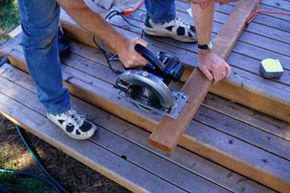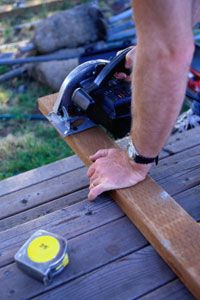Key Takeaways
- Deck extension is a complex project best handled by an experienced contractor, who should be licensed, insured and capable of obtaining any necessary permits.
- Understanding basic deck-building components like ledgers, posts, beams, joists, and the importance of spacing for drainage and cantilevering rules is crucial even if you're not doing the work yourself.
- Safety features, including railings and stairs, must comply with local codes. While the project can be costly and time-consuming, the result is a durable and expanded outdoor living space.
A deck is one of the most pleasant ways to expand a living space. As an extension from your house, it's a way to relish the beautiful outdoors while still enjoying the convenience of being just a step away from your home. It's also one of the most popular ways to entertain a big party: A deck not only increases the available space, but it also gives guests the option of staying inside or enjoying the outside. However, if you're stuck with a house that has a small, cramped deck, it won't help much with entertaining. Finding yourself frustrated with the limitation, it can be all the more distressing to discover how expensive it will be to tear down and rebuild.
However, the good news is that if the original deck is structurally sound, you could consider simply extending the existing deck. Make no mistake: This is not a job for the average do-it-yourself enthusiast. It takes advanced skills and some experience with similar projects. Seriously consider hiring a contractor to do the work for you.
Advertisement
Depending on your available space, you have several options. You could consider widening or lengthening the deck on its current level. Many people like to add new levels to the deck, connected by stairs. This latter method is best when you're worried that the new decking material won't match the old (and if the old deck is weathered at all, it likely won't). By putting the new deck on a different level, it makes the transition less jarring and unsightly. The new level also doesn't have to be separated by a whole flight of stairs -- one or two steps will be enough. A multi-leveled deck is also great for entertaining because it offers multiple intimate spaces.
What should you keep in mind when you're ready to stretch that deck out a little?
Advertisement


